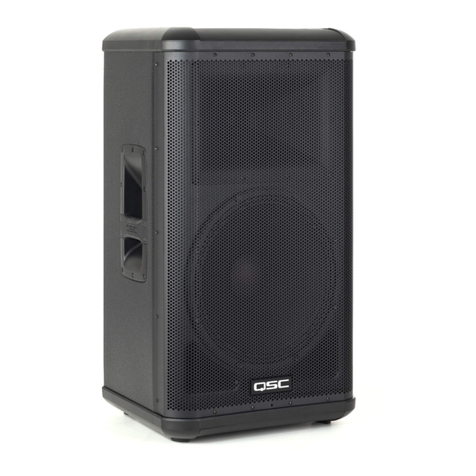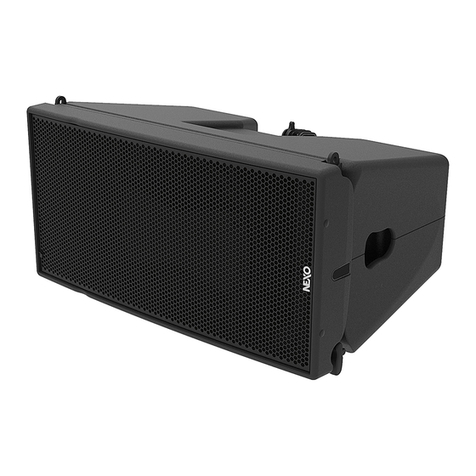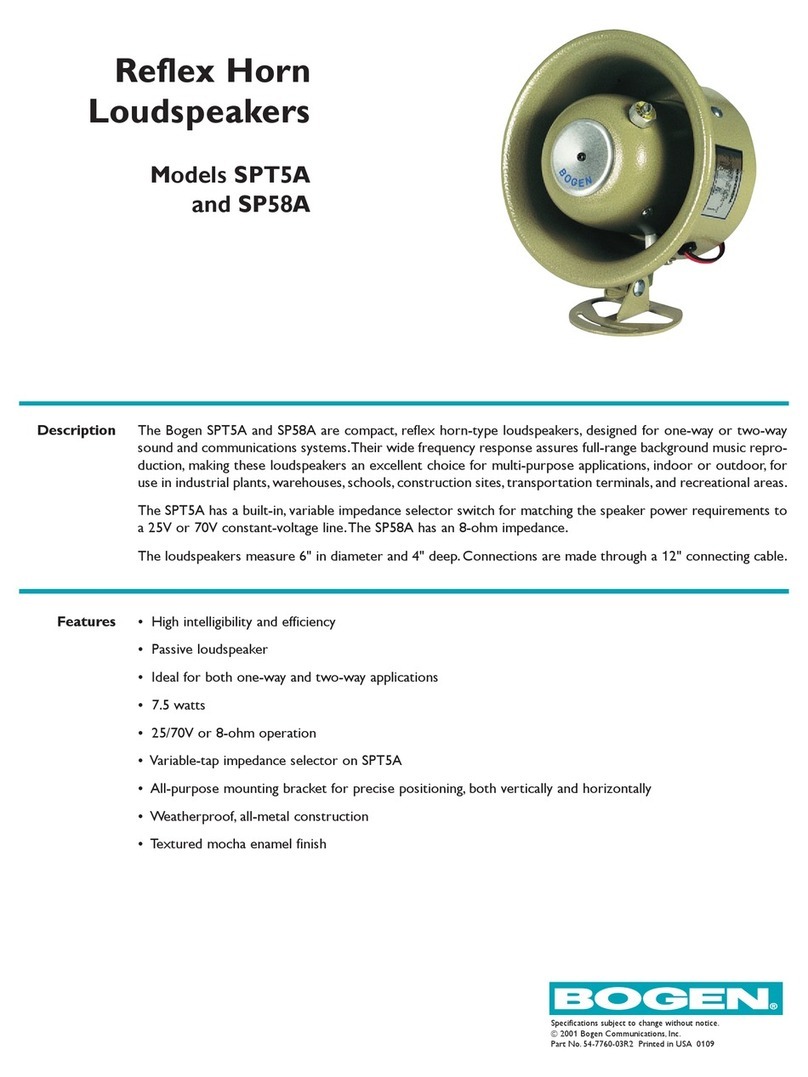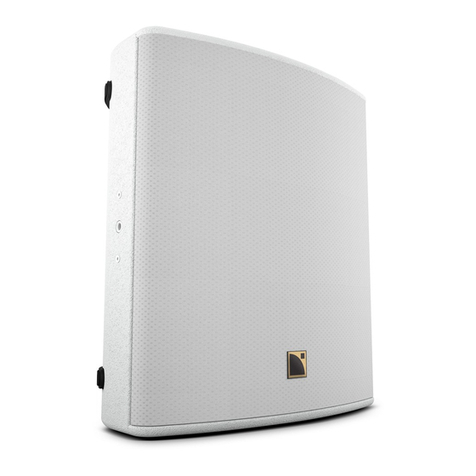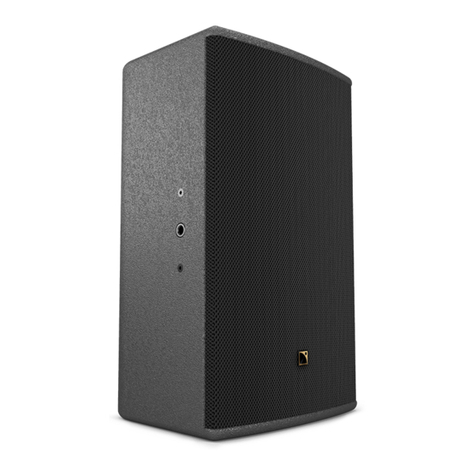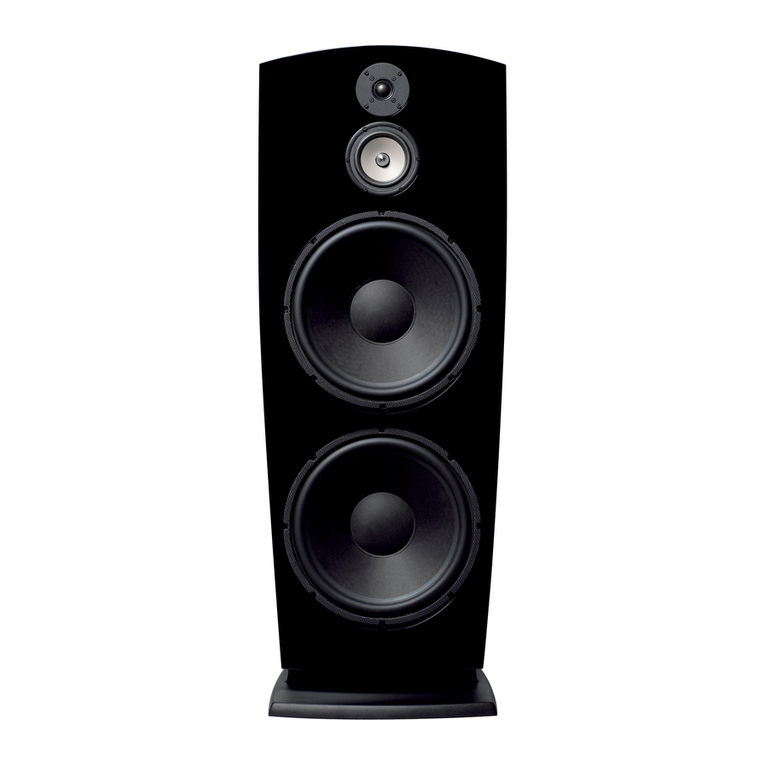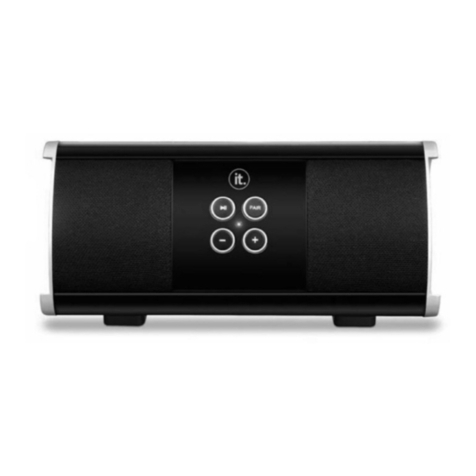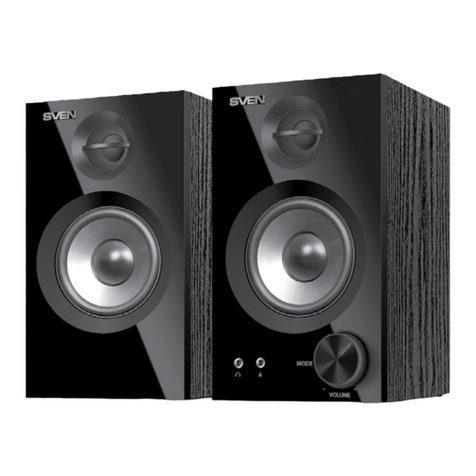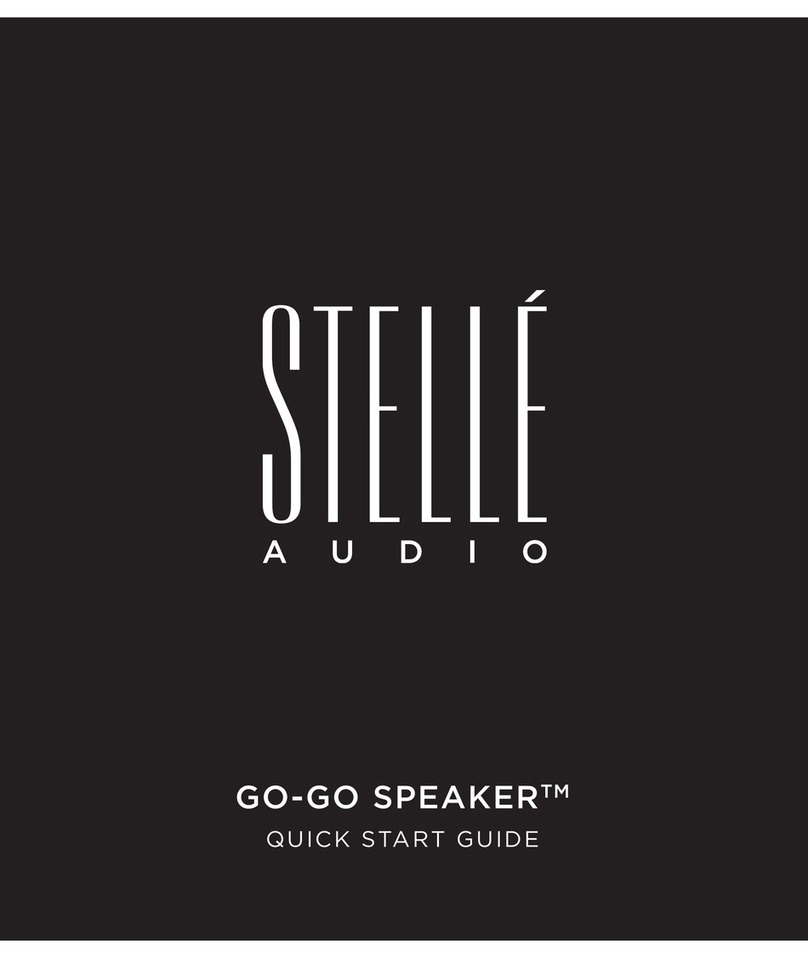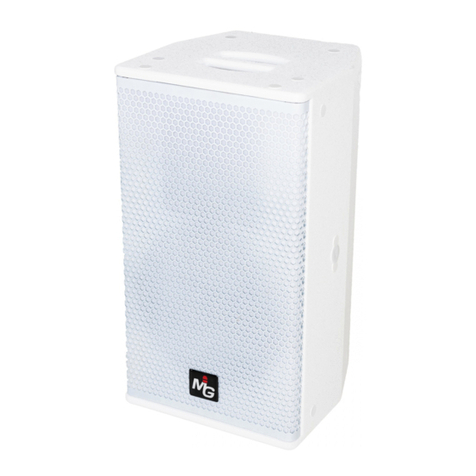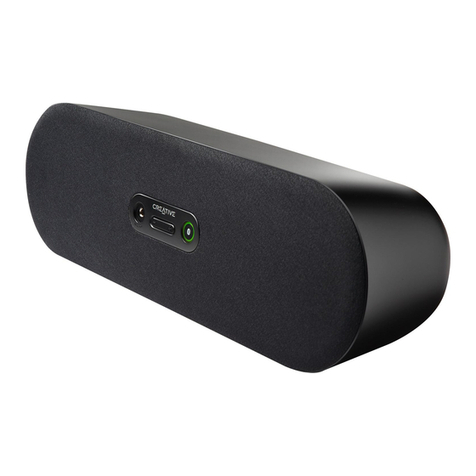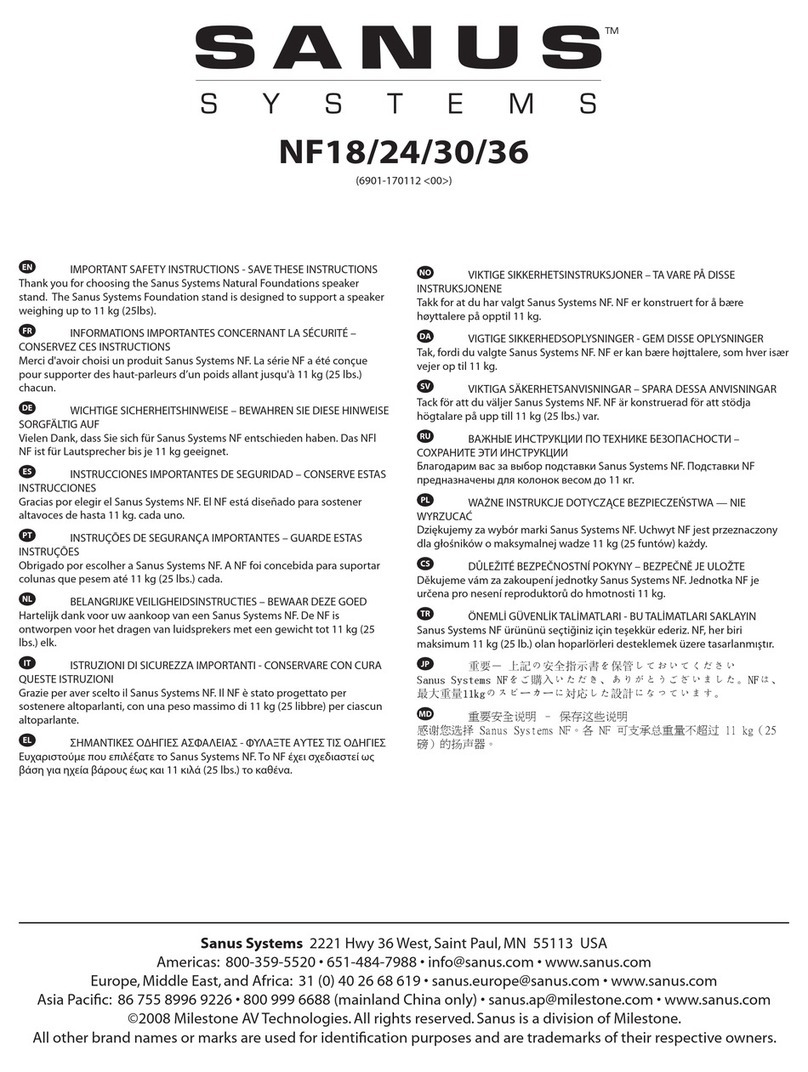Draper 98436 User manual

F
HAUT-PARLEUR
SANS FIL
20V
98436/94903
E
ALTAVOZ INALÁMBRICO
20V
98436/94903
P
COLUNA SEM FIOS
20V
98436/94903
D
20V
DRAHTLOS-
LAUTSPRECHER
98436/94903
20V
DRAADLOZE LUID-
SPREKER
98436
/94903
20V
WIRELESS
SPEAKER
98436/94903
MULTI-TOOL BATTERY SYSTEM
ORIGINAL LANGUAGE

1. INTRODUCTION
1.1 SCOPE
Bring rich sound to wherever the job takes you with the
versatile and durable wireless speaker. The speaker is
equipped to wirelessly connect to mobile devices. In
addition, it has one auxiliary port for MP3 compatibility
and one USB port for charging mobile devices. For
maximum versatility it can be powered by D20 Draper
batteries.
Part of our core range, this product is suitable for
enthusiasts and tradespersons alike. Any application
other than that it was intended for, is considered misuse.
This product is not a toy and must not be used by
children or any person with reduced physical, sensory or
mental capabilities or lack of experience and knowledge,
or people unfamiliar with these instructions.
Local regulations may restrict the age of the operator.
1.2 UNDERSTANDING THIS MANUALS
SAFETY CONTENT
Warning! – Information that draws attention to the
risk of injury or death.
Caution! – Information that draws attention to the risk of
damage to the product or surroundings.
1.3 EXPLANATION OF SYMBOLS
Read the instruction manual.
Do not abandon into the environment.
Keep out of the reach of children.
Warning!
Machine weight.
Class II construction
(Double insulated).
WEEE –
Waste Electrical & Electronic Equipment.
Do not dispose of Waste Electrical & Electronic
Equipment in with domestic rubbish.
Lithium-ion product.
Do not incinerate or throw
onto fire.
For indoor use only.
Do not expose to rain.
130°
Fuse protective device.
Polarity indication.
Rated voltage.
European conformity.
UK Conformity Assessed.
European conformity.
2. SPECIFICATION
2.1 SPECIFICATION
Stock No. .................................................. 98436/94903
Part No. ............................... D20WS/ DTKD20PTK/SPK
Aux input socket ....................................................3.5mm
Output power ........................................................ 2 x 3W
Operating range ................................... Up to 10M (30ft)
Weight (machine) .....................................................11kg
3. HEALTH AND SAFETY
INFORMATION
3.1 GENERAL SAFETY
INSTRUCTIONS FOR POWER TOOL
USE
Warning! Read all safety warnings, instructions,
illustrations and specifications provided with this
power tool. Failure to follow all instructions listed below
may result in electric shock, fire and/or serious injury.
Save all warnings and instructions for future
reference.
The term “power tools” in the warnings refers to your
mains-operated (corded) power tool or battery-operated
(cordless) power tool.
–
2
–

–
3
–
1) Work area safety
a) Keep work area clean and well lit. Cluttered or
dark areas invite accidents.
b) Do not operate power tools in explosive
atmospheres, such as in the presence of
flammable liquids, gases or dust. Power tools
create sparks which may ignite the dust or fumes.
c) Keep children and bystanders away while
operating a power tool. Distractions can cause
you to lose control.
2) Electrical safety
a) Power tool plugs must match the outlet. Never
modify the plug in any way. Do not use any
adapter plugs with earthed (grounded) power
tools. Unmodified plugs and matching outlets will
reduce risk of electric shock.
b) Avoid body contact with earthed or grounded
surfaces, such as pipes, radiators, ranges and
refrigerators. There is an increased risk of
electric shock if your body is earthed or grounded.
c) Do not expose power tools to rain or wet
conditions. Water entering a power tool will
increase the risk of electric shock.
d) Do not abuse the cord. Never use the cord for
carrying, pulling or unplugging the power
tool. Keep cord away from heat, oil, sharp
edges or moving parts. Damaged or entangled
cords increase the risk of electric shock.
e) When operating a power tool outdoors, use an
extension cord suitable for outdoor use. Use
of a cord suitable for outdoor use reduces the risk
of electric shock.
f) If operating a power tool in a damp location is
unavoidable, use a residual current device
(RCD) protected supply. Use of an RCD
reduces the risk of electric shock.
3) Personal safety
a) Stay alert, watch what you are doing and use
common sense when operating a power tool.
Do not use a power tool while you are tired or
under the influence of drugs, alcohol or
medication. A moment of inattention while
operating power tools may result in serious
personal injury.
b) Use personal protective equipment Always
wear eye protection. Protective equipment such
as a dust mask, non-skid safety shoes, hard hat
or hearing protection use for appropriate
conditions will reduce personal injuries.
c) Prevent unintentional starting. Ensure the
switch is in the off-position before connecting
to power source and/or battery pack, picking
up or carrying the tool. Carrying power tools
with your finger on the switch or energising power
tools that have the switch on invites accidents.
d) Remove any adjusting key or wrench before
turning the power tool on. A wrench or a key
left attached to a rotating part of the power tool
may result in personal injury.
e) Do not overreach. Keep proper footing and
balance at all times. This enables better control
of the power tool in unexpected situations.
f) Dress properly. Do not wear loose clothing or
jewellery. Keep your hair and clothing away
from moving parts. Loose clothes, jewellery or
long hair can be caught in moving parts.
g) If devices are provided for the connection of
dust extraction and collection facilities,
ensure these are connected and properly
used. Use of dust collection can reduce
dust-related hazards.
h) Do not let familiarity gained from frequent use
of tools allow you to become complacent and
ignore tool safety principles. A careless action
can cause severe injury within a fraction of a
second.
4) Power tool use and care
a) Do not force the power tool. Use the correct
power tool for your application. The correct
power tool will do the job better and safer at the
rate for which it was designed.
b) Do not use the power tool if the switch does
not turn it on and off. Any power tool that
cannot be controlled with the switch is dangerous
and must be repaired.
c) Disconnect the plug from the power source
and/or remove the battery pack, if detachable,
from the power tool before making any
adjustments, changing accessories, or storing
power tools. Such preventive safety measures
reduce the risk of starting the power tool
accidentally.
d) Store idle power tools out of the reach of
children and do not allow persons unfamiliar
with the power tool or these instructions to
operate the power tool. Power tools are
dangerous in the hands of untrained users.
e) Maintain power tools and accessories. Check
for misalignment or binding of moving parts,
breakage of parts and any other condition
that may affect the power tool’s operation. If
damaged, have the power tool repaired before
use. Many accidents are caused by poorly
maintained power tools.
f) Keep cutting tools sharp and clean. Properly
maintained cutting tools with sharp cutting edges
are less likely to bind and are easier to control.
g) Use the power tool, accessories and tool bits
etc. in accordance with these instructions,
taking into account the working conditions
and the work to be performed. Use of the
power tool for operations different from those
intended could result in a hazardous situation.

–
4
–
h) Keep handles and grasping surfaces dry,
clean and free from oil and grease. Slippery
handles and grasping surfaces do not allow for
safe handling and control of the tool in
unexpected situations.
5) Service
a) Have your power tool serviced by a qualified
repair person using only identical
replacements parts. This will ensure that the
safety of the power tool is maintained.
3.2 SAFETY INSTRUCTIONS FOR
MAINS POWERED CHARGERS &
BATTERY PACKS
Chargers
– The charger is for indoor use only.
– Prior to plugging the charger in to the supply, check
that the plug, cable and charger casing are in good
condition. If any are damaged, have the defective
part(s) replaced immediately by a suitably qualified
person.
– Only use a correctly rated mains outlet to provide
power, do not plug into site generators, attach to
engine generators or D.C. sources. Do not use a
mains socket outlet that is not switched.
– Use the correct Draper charger in conjunction with
it’s corresponding battery pack (consult the Draper
website for more information or to find your local
stockist).
– Do not charge any other batteries with Draper
chargers. Any other application is considered misuse.
– Do not attempt to charge battery packs that are too
hot (over 30ºC) or too cold (under 5ºC), if these
conditions apply set the battery pack aside to
“normalise” before proceeding with the charging
operation.
– Set up the charger and cable in a safe place where it
won’t be knocked, tripped over, stepped on, etc. and
where it is well ventilated. Make sure the ventilation
slots in the charger case are not obstructed.
– Inspect the battery pack for damage, if it is
undamaged, plug it into the charger, ensuring the
correct orientation.
– Switch the charger on and check that the correct
indicators illuminate, allow the battery pack to charge
(see the specific instructions for your charger). Once
charging is complete, switch the charger off,
disconnect from power supply, remove the battery
pack and store.
Battery packs
– Before charging, read the instructions.
– Do not expose to rain.
– Only use Draper D20 battery packs with this product.
Consult your Draper stockist for details.
– Do not charge any other batteries with Draper
chargers. Any other application is considered misuse.
– The charger must be disconnected from the power
supply before removing the battery.
– The battery must be removed from the appliance
before it is recycled.
– The battery is to be disposed of in-line with local
authority procedures.
– Do not crush, open or burn the battery. Exposure to
potentially harmful materials may occur.
– In case of fire use CO2 or dry chemical extinguisher.
– Do not expose to high temperatures >50°C. The
battery may degrade at high temperatures.
– Charge battery in conditions between 5°C to 30°C
with the designated charger for the battery.
– Do not use battery if it has been stored at 5°C or
less. Allow it to “normalise” at room temperature
before usage/charging.
Warning! – Leaking battery packs
– The electrolyte in battery packs is corrosive. Avoid
contact with the skin.
– If contact is made, flush the area with clean water,
pat dry and seek medical attention at the
earliest opportunity.
– Inform medical personnel that the contaminant is a
“high alkaline, corrosive liquid”.
– If electrolyte comes into contact with the eyes, flush
with copious amounts of water only.
Seek immediate medical attention, relaying the
information above.
3.3 RESIDUAL RISK
Important: Although the safety instructions and
operating manuals for our tools contain extensive
instructions of safe working with power tools, every
power tool involves a certain residual risk which can not
be completely excluded by safety mechanisms. Power
tools must therefore always be operated with caution!
3.4 CONNECTION TO THE POWER
SUPPLY
Caution: Risk of electric shock. Do not open.
This appliance is supplied with an approved plug and
cable for your safety.
Never use a damaged or incomplete plug.
This appliance is Class II
†
and is designed for
connection to a power supply matching that detailed on
the rating label and compatible with the plug fitted.
Carefully select an extension lead. Some machines are
not suitable for use with extension leads. If the tool is
designed for use outdoors, only use an extension lead
suitable for that environment in conjunction with an RCD
adaptor. When using an extension lead, select one
capable of handling the current (amps) drawn by the
machine in use. Ensure the cable is fully unwound
regardless of the distance between the power supply

–
5
–
and the tool. Excess current (amps) and a coiled
extension lead will cause the cable to heat up and can
result in fire.
Keep extension leads away from moving hazardous
parts to avoid damages to the cable which can lead to
contact with live parts. Position cable safely to avoid
tripping over.
†
Double insulated : This product requires no earth
connection as supplementary insulation is applied to the
basic insulation to protect against electric shock in the
event of failure of the basic insulation.
Important! If using an extension lead, follow the
instructions that came with your lead regarding
maximum load while cable is wound. If in doubt, ensure
that the entire cable is unwound. Using a coiled
extension lead will generate heat which could melt the
lead and cause a fire.
4. UNPACKING AND
CHECKING
4.1 PACKAGING
Carefully remove the product from the packaging and
examine it for any sign of damage. Check contents
against the parts shown in Fig A. If any part is damaged
or missing, please contact the Draper Help Line (see
back page). Do not attempt to use the product!
The packaging material should be retained during the
warranty period, in case the product needs to be
returned for repair.
Warning!
• Some of the packaging materials may be harmful to
children. Do not leave any of these materials in reach
of children.
• If any of the packaging is to be thrown away, make
sure it is disposed of correctly, according to local
regulations.

–
6
–
5. IDENTIFICATION – FIG.A
FIG.A
(1)
Speaker
.
(2)
Indicator light.
(3)
Volume down button (Short press).
Previous
track button (Long press).
(4)
Power button
.
(5)
Pairing button
.
(6)
Play/Pause button
.
(7)
Volume up button (
Short
press).
Next
track button (Long press)
.
(8)
Battery cartridge
.
(9)
Aux in port
.
(10)
USB charging socket
.
Note: For details of our full range of accessories and consumables, please visit drapertools.com
(4) (5) (6)
(1)
(8)
(9)
(10)
(2)
(7)
(3)
6. OPERATION AND USE
6.1 PAIRING AND CONNECTING A
DEVICE TO THE SPEAKER – FIG.1
You need to pair your device with the speaker before
you can auto-link to play/stream music through the
speaker. Pairing creates a bond so two devices can
recognize each other.
To allow for better sound quality, we recommend
setting the volume level to around two-thirds on your
device, then adjust the volume on the speaker as
required.
– Press the Power button (4)to turn on the speaker.
The indicator light (2)will flash blue.
– The blue light indicator (2)flashes faster to indicate
the speaker is ready for pairing.
– Turn on Bluetooth
®
on your device according to the
device’s user manual to link to the speaker.
– Select the device named from the suggested list of
devices to pair with.
– Once connected, there will be a beep sound and the
indicator light (2)will remain solid blue.

–
7
–
– Simply select and play any music from your source
device. Volume control, play/pause and track
navigation can be adjusted from your source device,
or directly from the speaker.
Note:
If 2 devices are pairing for the first time, and both search
for the speaker, it will show its availability on both
devices. However, if one device links with this unit first,
then the other device won’t find it in the list.
If your device is temporarily disconnected to the
speaker, you will need to manually reconnect your
device again.
If the speaker shows on your device list but your device
cannot connect with it, please delete the item from your
list and re-pair the device with the speaker following the
steps described previously.
The effective operation range between the system and
the paired device is approximately 10 metres (30 feet).
Any obstacle between the system and the device can
reduce the operational range.
Bluetooth
®
connectivity performance may vary
depending on the connected devices.
Please refer to the Bluetooth
®
capabilities of your device
before connecting to the speaker. All features may not
be supported on some devices.
1
FIG.
(4)
(2)
6.2 PLAYING AUDIO FILES
WIRELESSLY – FIG.2
When you have successfully connected the speaker with
the chosen Bluetooth
®
device you can start to play your
music using the controls on your connected device.
– Once playing has started adjust the volume to the
required setting by short pressing the Volume buttons
(3)and (7)on the speaker or in the usual way on
your device.
– Use the controls on your device to play/pause and
navigate tracks. Alternatively, navigate tracks using
volume buttons (3)and (7)on the speaker (long
presses).
2
FIG.
(3)
Note: Not all player applications or devices may respond
to all of these controls.
Some mobile phones may temporarily disconnect from
the speaker when you make or receive calls. Some
devices may temporarily mute their audio streaming
when they receive text messages, emails or for other
reasons unrelated to audio streaming. Such behaviour is
a function of the connected device and does not indicate
a fault with the speaker.
6.3 DISCONNECTING YOUR DEVICE –
FIG.3
Press and hold the pairing button (5)for 2-3 seconds
to disconnect with your device. The indicator light
flashes blue (2), indicating the speaker is discoverable
again for pairing.
3
FIG.
(5)
(2)
* The Bluetooth
®
word is a registered trademark
owned by the Bluetooth SIG Inc.
6.4 PLAYING MUSIC VIA AUXILIARY
INPUT SOCKET – FIG.7
A 3.5mm Auxiliary input socket (8)is provided on the
right side of the unit to permit an audio signal to be fed
into the unit from any devices that features a headphone
or audio output, such as an iPod, MP3 or CD player.
−Connect a stereo or mono audio source (for
example, iPod, MP3 or CD player) to the Auxiliary
input socket (marked ‘AUX’) and the Aux in indicator
turns green indicating the speaker is in auxiliary input

–
8
–
mode.
−Adjust the Volume control on your iPod, MP3 or CD
player to ensure an adequate signal and then adjust
the volume on the speaker for comfortable listening.
−To have the better sound quality, we recommend
setting the volume to more than two-thirds level on
your audio device and then adjust the volume on the
speaker as required.
Note: When Aux in socket is connected to an audio
device, wireless connection will be disabled to minimize
power consumption.
4
FIG.
(9)
6.5 BATTERY PACK CHARGING – FIGS.
5 – 6
This power product is supplied “bare”, without battery
pack or charger. Compatible batteries, chargers and
accessories are available through Draper Tools stockists.
Important: Only Draper D20 designated battery packs
and chargers can be used in conjunction with this
product. Use of any other third party battery packs/
chargers with this product is considered misuse and will
invalidate the product’s warranty.
Once connected to the mains supply, recharging of the
battery can be left generally unsupervised, requiring
minimal attention. Complex circuit construction monitors
the battery condition, adjusting the recharge current to
suit. When the recharge cycle is complete, to maintain
the full capacity, a low output current will continue as
required.
Warning! Check the condition of the charger and
battery prior to each charge. If there is any sign of
damage then do not commence charging, seek advice
from Draper Tools.
The battery pack is supplied un-charged and must be
charged before initial use.
To charge the battery pack (12), it must first be removed
from the tool.
5
FIG.
(8)
(11.2)
To release the battery pack:
−Press the battery release button (11.1) and gently
slide the battery pack off.
−Plug the battery charger (12) unit into a power
socket.
−The red LED (12.1) will illuminate to show the
charger has power.
−Slide the battery into the charger (the battery is
shaped to fit into the charger one way only.
−After a few seconds delay, the red LED (12.1) will
flash to show that charging has begun, then
illuminate solid red.
−Whilst the battery is charging, the green LED (12.2)
will flash, (the red LED will go from flashing to
constant red.
−When the battery is fully charged the green LED
stops flashing and remains a constant green. The red
LED will extinguish.
Caution: Do not pull the plug out of the power supply by
pulling on the cord. Make sure to grasp the plug when
removing from power supply to avoid damaging the cord.
To remove the battery from the battery charger:
−Supporting the battery charger with hand, pull out
the battery from the battery charger.
Caution: If the battery charger has been in continuous
use it will be hot. Once the charging has been
completed, leave the charger 15 minutes to cool until
next use.

–
9
–
6
FIG.
(12.1)
(12.2)
(12)
(11)
Caution: Only use the plug to disconnect from the
power supply, never use the cable.
Caution: If the battery charger has been in continuous
use it will be hot. Once charging is completed, leave the
charger to cool.
Only charge cooled batteries.
7.12 BATTERY PACK PROTECTION
FEATURES
Overcharging protection: When the battery pack is
fully charged, the transformer/charger will automatically
shuts off, protecting the internal components.
Over-discharging protection: Stops the battery pack
from discharging beyond the recommended lowest
safety voltage.
Overheating protection: An internal thermistor cut-off
sensor shuts off the battery pack should it become too
hot during operation. For example, if the tool is
overloaded or used for extended periods. 30 minutes
cooling time may be required.
Current protection: If the battery is overloaded or the
maximum current draw exceeded, the battery will shut
off to protect internal components. The battery pack will
resume operation once the current draw is at a safe
level.
Short circuit protection: The battery pack will stop
operating immediately if it was to short circuit.
7.13 BATTERY PACK CHARGE STATUS
– FIG.7
Press the charge level indicator button (11.2) to display
the battery charge level.
(11.2)
0 – 10% 0 – 25% 25 – 50%
50 – 75% 75 – 100%
7
FIG.
7.14 BATTERY LIFE EFFICIENCY AND
CHARGING ADVICE
– Avoid recharging at high temperatures.
A rechargeable battery will be hot immediately after
use. If such a battery is recharged immediately after
use the battery life will be shortened. Leave the
battery and recharge it after it has cooled.
– The battery should only be used and/or charged
when battery temperature is between 5°C and 30°C.
– The battery needs to be warmed-up or cooled down
to prevent damaging to the batteries internal
components.
Note: If battery is too hot or too cold, allow it to
‘normalise’ before use or charging.
Note: Failure to warm up or cool down a battery could
result in serious damage to the battery, charger and
user.

8. MAINTENANCE AND TROUBLESHOOTING
8.1 TROUBLESHOOTING GUIDE
Problem Possible Cause Remedy
Speaker does not operate Battery discharged Charge battery
Battery faulty Replace battery
Battery hot Allow to cool
Unsure Return to an authorised service
agent for diagnosis
Cannot pair with your device Too far away Move closer to speaker
Obstacle between device and
speaker reducing operational range
Move closer to speaker
Another device already connected/
paired
Disconnect other devices
Device not compatible Use alternative device
Can’t hear any sound Volume too low Turn volume up
Device was disconnected Reconnect device
–
10
–
8.2 MAINTENANCE
Regular inspection and cleaning reduces the necessity
for maintenance operations and will keep your tool in
good working condition.
The motor must be correctly ventilated during tool
operation. Avoid blocking the air inlets and vacuum the
ventilation slots regularly.
Do not use solvents or fuels to clean the product. When
not in use, store the product in a safe, dry place.
9. WARRANTY
9.1 WARRANTY
Draper power tools have been carefully tested &
inspected and are guaranteed to be free from defective
materials or workmanship.
For details of warranty and terms and conditions
please visit the Draper Tools website at
www.drapertools.com/warranty

–
11
–
10. DISPOSAL
10.1 DISPOSAL
– At the end of the machine’s working life, or when it
can no longer be repaired, ensure that it is disposed
of according to national regulations.
– Contact your local authority for details of collection
schemes in your area.
In all circumstances:
• Do not dispose of power tools with
domestic waste.
• Do not incinerate.
• Do not dispose of WEEE* as unsorted
municipal waste.
* Waste Electrical & Electronic Equipment.
10.2 BATTERY PACK DISPOSAL
INFORMATION
Warning!
−Do not put battery packs in a fire or mutilate – cells
may burst or release toxic materials.
−Do not short circuit cells, may cause burns.
−The battery pack must be removed from the
appliance before it is scrapped.
−The battery pack is to be disposed of safely.
−Do not mutilate batteries, corrosive electrolyte will be
released.
−Do not dispose of batteries or cells in a charged
condition.
Expired batteries must be recycled/disposed of in
accordance with the appropriate regulation or legislation.
They should be returned to your local warranty agent/
stockist.
NOTES
.................................................................................................
.................................................................................................
.................................................................................................
.................................................................................................
.................................................................................................
.................................................................................................
.................................................................................................
.................................................................................................
.................................................................................................
.................................................................................................
.................................................................................................
.................................................................................................
.................................................................................................
.................................................................................................
.................................................................................................
.................................................................................................
.................................................................................................
.................................................................................................
.................................................................................................
.................................................................................................
.................................................................................................
.................................................................................................
.................................................................................................
.................................................................................................
.................................................................................................
.................................................................................................
.................................................................................................
.................................................................................................
.................................................................................................
.................................................................................................
.................................................................................................
.................................................................................................
.................................................................................................
.................................................................................................
.................................................................................................
.................................................................................................
.................................................................................................
.................................................................................................
.................................................................................................
.................................................................................................
.................................................................................................
.................................................................................................
.................................................................................................
.................................................................................................
This manual suits for next models
1
Table of contents
